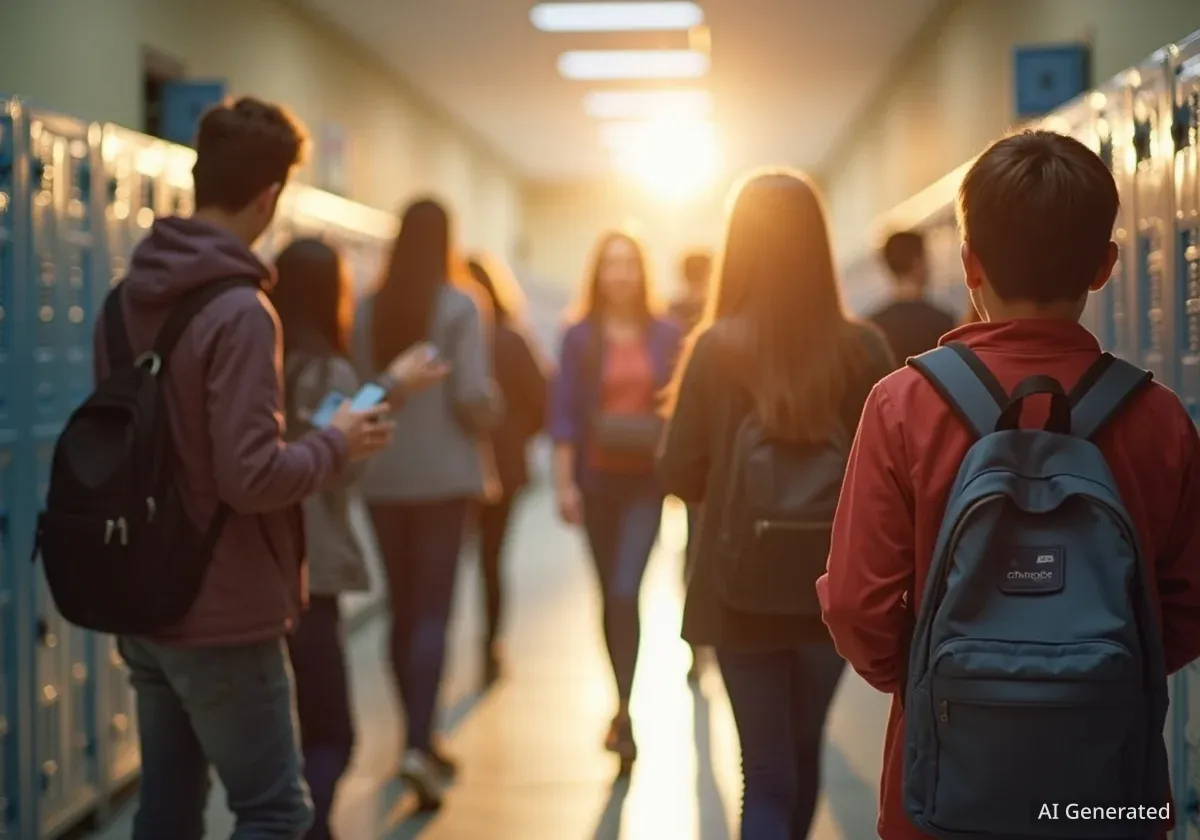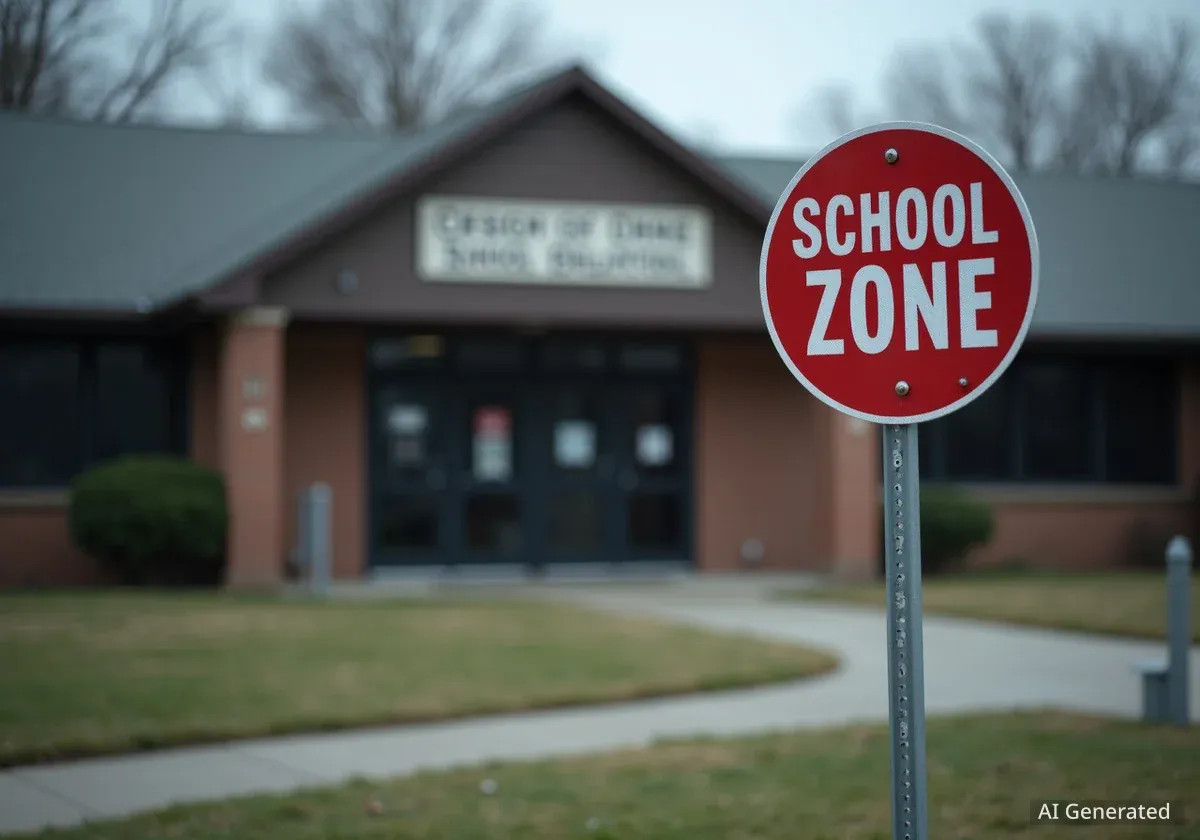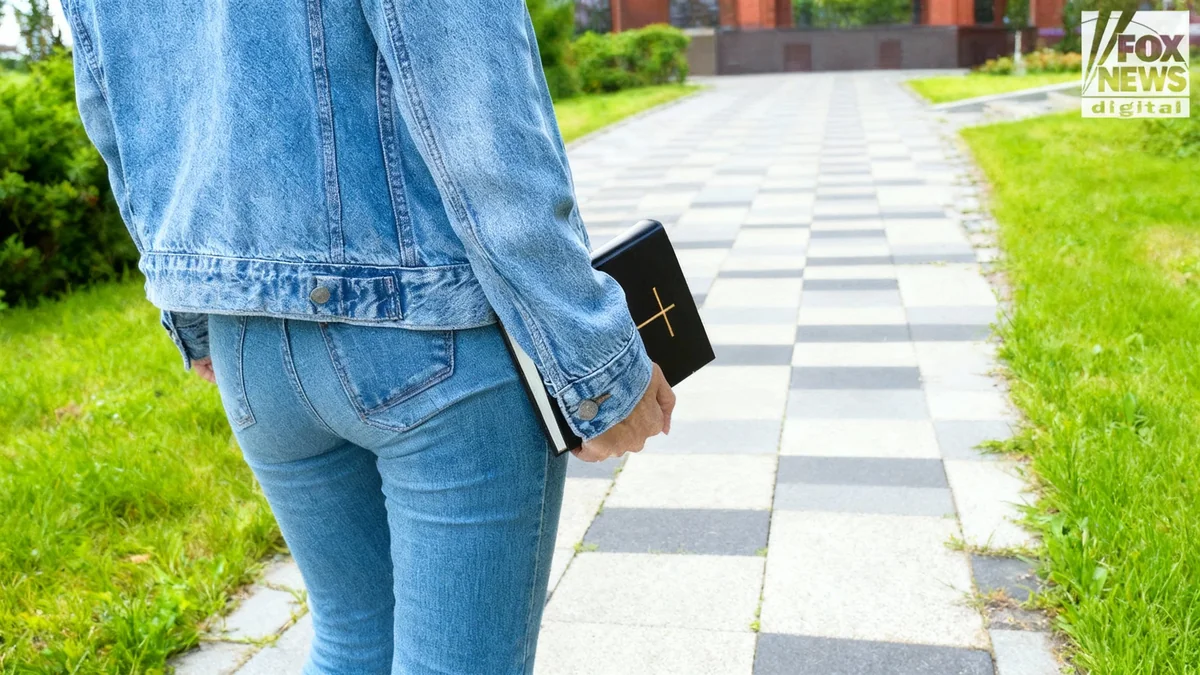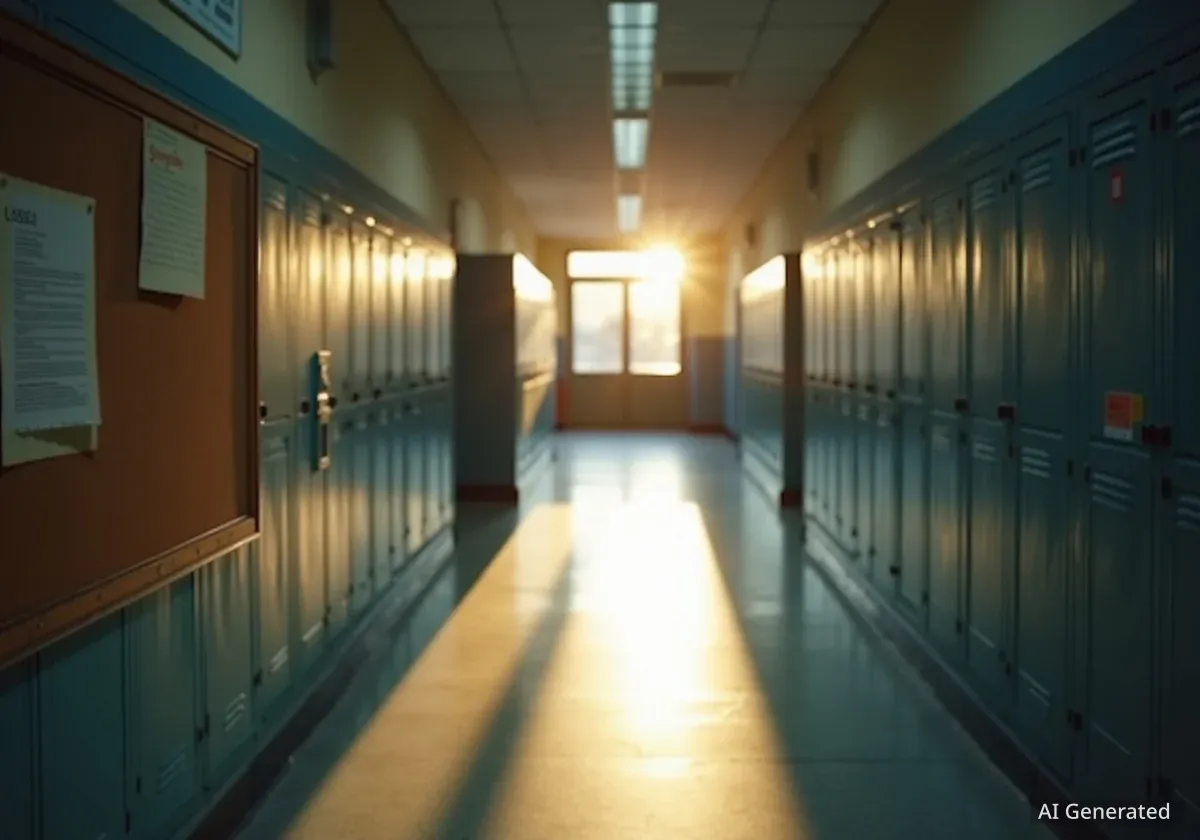A recent statewide ban on student cellphone use in New York public schools, implemented at the start of the current academic year, is showing unexpected positive outcomes across Long Island. Educators report a significant increase in student engagement, social interaction, and overall classroom focus, contrary to initial concerns about enforcement challenges and potential backlash.
The policy, championed by Governor Kathy Hochul, prohibits students from using electronic devices from the first bell to the last, with exceptions for qualified medical, family, or educational needs. This "bell-to-bell" restriction aimed to reduce distractions and improve youth mental health, and early observations suggest it is achieving these goals.
Key Takeaways
- Students show increased engagement and participation in class.
- Social interactions among students are more frequent and direct.
- Educators report fewer disciplinary issues related to phone use.
- Initial concerns about pushback from students and parents have largely not materialized.
- Schools are adapting with new activities and communication methods.
Unexpected Positive Shifts in Student Behavior
Many Long Island educators initially anticipated significant hurdles in enforcing the new cellphone policy. Jed Herman, Principal of Farmingdale High School, shared his early apprehension.
"I thought I’d be more of a phone police," Herman stated. "I thought I would constantly fight this battle."
However, Herman has observed a different reality. Students at Farmingdale are engaging more actively in class discussions and socializing freely during non-instructional times. He noted an increase in students playing board games during lunch breaks and making eye contact more frequently.
This sentiment is echoed across the region. Nearly two months into the school year, many Long Island educators indicate the rollout has been smoother than expected. They attribute this success partly to widespread student buy-in, as many students themselves recognize the distracting nature of smartphones.
Fact Check
- New York joined other states in restricting smartphone use in public schools.
- The ban covers "bell-to-bell" periods, from the start of the school day to its end.
- Governor Kathy Hochul advocated for the ban, citing distraction reduction and mental health benefits.
Reduced Conflicts and Improved Focus
Tim Eagen, president of the Suffolk County School Superintendents Association, expressed pleasant surprise at the smooth transition. Eagen, who also leads the Kings Park district, highlighted minimal pushback from both students and parents.
"We were a little concerned that we were going to get some pretty significant pushback from students and parents," Eagen commented. "But by and large, our students, our parents, and our staff have embraced the change."
A survey released by the New York State United Teachers union further supports these observations. The survey revealed "overwhelming support" for the ban among educators. Teachers reported students being more present and participative during lessons and displaying "considerably more positive" social interactions.
Educators also noted that because the ban applies to all public schools statewide, students feel less fear of missing out (FOMO) since their friends are also without phones. This universal application appears to foster a more equitable social environment.
Student Perspectives on the Ban
While some initial skepticism existed among students, many are now recognizing the benefits. Mia Estrada, a 14-year-old ninth grader at Memorial Junior High School in Valley Stream, initially found the ban "iffy" and inconvenient.
For instance, instead of texting her mother for a Gatorade before a soccer game, Mia now has to use a designated phone. Despite this, she has noticed positive changes in her social life.
"This one time, I was sitting alone. So I was like, 'Let me just go up to this other kid that's sitting alone,' " Mia recounted. "I found out his name and what class he has and all these other things. And now... we're like acquaintances. So it's nice for me."
Mia believes that without the ban, she would have likely been scrolling through TikTok on her phone. She now assesses the ban as "not that bad."
Background on the Ban
The statewide cellphone ban in New York public schools was enacted to address growing concerns about smartphone addiction, academic distraction, and the impact on student mental health. It aligns New York with a growing trend among states implementing similar restrictions.
Fewer Exceptions, Fewer Confiscations
One primary concern for Long Island educators involved managing student exemptions for phone use. Todd Winch, Superintendent of Levittown schools, anticipated a high volume of exemptions. However, his district of roughly 7,000 students has only seen about two dozen exemptions, far fewer than expected.
Winch and his colleagues also prepared for numerous phone confiscations. Levittown, with two high schools each housing over 1,000 students, used part of the $37,000 state funding to purchase three safes for storing confiscated devices. Each safe can hold up to 30 phones.
Despite these preparations, each building confiscates only five to ten phones daily, barely filling one safe. This indicates a high level of compliance from students.
"The students are actually engaging with one another in ways that we haven't seen for quite a while," Winch observed. "I'm surprised by the level to which students have embraced the more old-school sort of entertainment, whether it be board games or talking to one another."
Even at East Hampton High School, where students store phones in pouches rather than lockers, Principal Sara Smith reported a smooth process. The extra step of locking and unlocking devices adds only a minute or two to dismissal, and incidents of students trying to open pouches during the day have been minimal.
Return to Analog: Board Games and Paper Sign-Ins
Schools are adapting to the new environment by reintroducing traditional forms of engagement. Many Long Island schools have purchased more board games. Levittown, for example, even bought a foosball table for one high school.
Some schools have also installed new clocks after students complained about not knowing the time without their phones. Farmingdale's Principal Herman now reminds students to bring physical credit or debit cards for vending machines, as Apple Pay via phones is no longer an option. QR code sign-ins for meetings have reverted to old-fashioned paper sign-in sheets.
At Memorial Junior High School in Valley Stream, Principal Bret Strauss has allowed seventh and eighth graders to go outside during recess this year. Teacher Robert Butler, who supervises outdoor recess, previously worked in a different Suffolk County school before the ban. He recalls the constant struggle of reminding students to put away their phones during class.
"I had kids putting in fake phones, iPads, phones that were broken, and then keeping their real phones," Butler explained. "It was just so much to deal with from a classroom management perspective. The school policy has made all the difference. Honestly, it makes instruction much smoother."
Similar to Levittown, Strauss's office sees only two to four phone confiscations per day out of approximately 1,000 students. He admitted initial nervousness about implementing the ban.
"We were very nervous about the cellphone ban," Strauss said. "We thought the genie was out of the bottle and that it was going to be an impossible thing to fix."
However, he has observed increased student engagement and a decrease in conflicts related to issues like AI cheating or inappropriate social media comments. Strauss concluded, "It's getting kids to be kids again. Remember what it was like before [smartphones]? It's nice to see a return to that."
Lingering Concerns and Parental Communication
Despite the widespread positive feedback, some concerns remain. Xiara Beltre, a ninth grader at Valley Stream Memorial Junior High, noted that some peers miss the ability to take photos and videos in school, which they used to document their school lives.
Rabiyah Alli, a parent of a ninth grader at the same school, finds the ban inconvenient. Her daughter Layla sometimes forgets to inform her about club activity end times or decides to stay longer. This often leaves Alli waiting outside for her daughter.
"I like knowing where my kids are and I can reach them," Alli stated, also mentioning her high school senior son. "I do miss that."
However, Xiara's father, Carlos Beltre, supports the ban, viewing it as a partnership between home and school to manage his daughter's phone habits. He believes it is too early to definitively assess its long-term effectiveness, but he sees it as a good step to minimize distractions.
John Caulfield, a middle school counselor and president of the Levittown teachers union, believes the new policy will eventually become standard practice.
"This will become one of those rules that we just do without even knowing we're doing it," Caulfield predicted.





